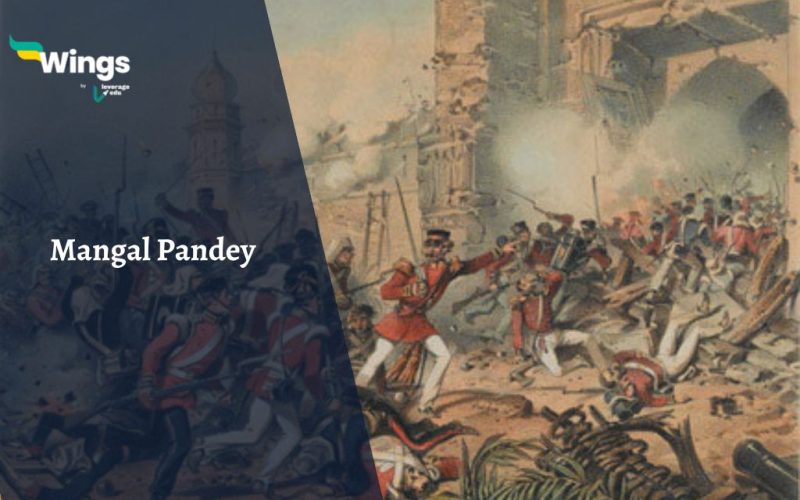Mangal Pandey, a name etched in the annals of Indian history, was an Indian soldier whose pivotal role marked the prelude to the Revolt Of 1857. During the 1857 First War of Independence, he ignited the rebellion by protesting against the use of greased cartridges rumored to contain cow or pig lard, a violation of his Hindu beliefs. This blog explores his life, the mutiny he initiated, and its far-reaching consequences.
Table of Contents
Early Life
Mangal Pandey, born in Nagwa, a village in the upper Ballia district of the Ceded and Conquered Provinces (now Uttar Pradesh), hailed from a Hindu Brahmin family. He enlisted in the Bengal Army in 1849 and served as a private soldier (sepoy) in the 5th Company of the 34th Bengal Native Infantry by March 1857. His defiance against British authorities played a significant role in the lead-up to the Indian Rebellion of 1857.
Must Read: Revolutions in India You Must Know About
Revolt of 1857
The fateful afternoon of March 29, 1857, witnessed the spark that would ignite a rebellion. Mangal Pandey, a sepoy in the 34th Bengal Native Infantry, stood armed with a loaded musket, urging fellow sepoys to rebel. He aimed at Lieutenant Baugh, setting off a chain of events that would alter history.
He fired at British officer Lieutenant Baugh but missing. Pandey then attacked with a talwar, injuring Baugh. He attempted suicide but failed. After a trial, Pandey was sentenced to death by hanging. Jemadar Ishwari Prasad, accused of not arresting Pandey, met the same fate. Mangal Pandey’s defiance and sacrifice marked a significant catalyst in the Indian struggle for independence against British rule.
Motivation and Context
Pandey’s motivations remain unclear. Some attribute it to the controversial Enfield rifle cartridges, while others suggest religious tensions and British efforts at conversion contributed to sepoys’ unrest. But no one can deny the fact that Pandey’s actions marked the beginning of the Indian Rebellion of 1857, influencing later Indian nationalists. His name even became a derogatory term among British soldiers.
Must Read: Indian Freedom Fighters
Commemoration
The Indian government honored Pandey with a postage stamp in 1984. A park, Shaheed Mangal Pandey Maha Udyan, stands at the site of his historic attack. Mangal Pandey’s actions, motivations, and legacy remain subjects of historical debate, but his pivotal role in igniting a rebellion that challenged British rule in India is undeniable. His story serves as a testament to the courage and sacrifices made by countless individuals during this tumultuous period in Indian history.
Mangal Pandey’s story inspired a film, “Mangal Pandey: The Rising,” a stage play titled “The Roti Rebellion,” and found a place in literature, like Zadie Smith’s “White Teeth.”
Quiz Time
Results
#1. What was the primary cause of Mangal Pandey's revolt in 1857?
#2. Mangal Pandey was a member of which Indian infantry unit during his rebellion?
#3. What was the ultimate fate of Mangal Pandey after his arrest and trial?
For more such interesting and informative topics on History and more, stay tuned to our General Knowledge section. If you want to know more about studying abroad, reach out to our experts on Leverage Edu!
 One app for all your study abroad needs
One app for all your study abroad needs
















